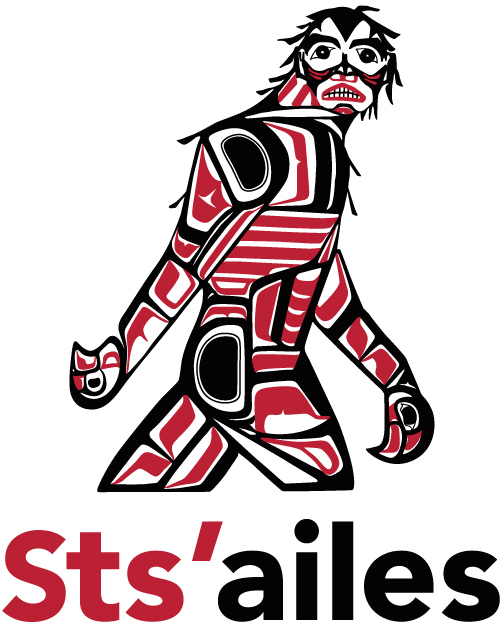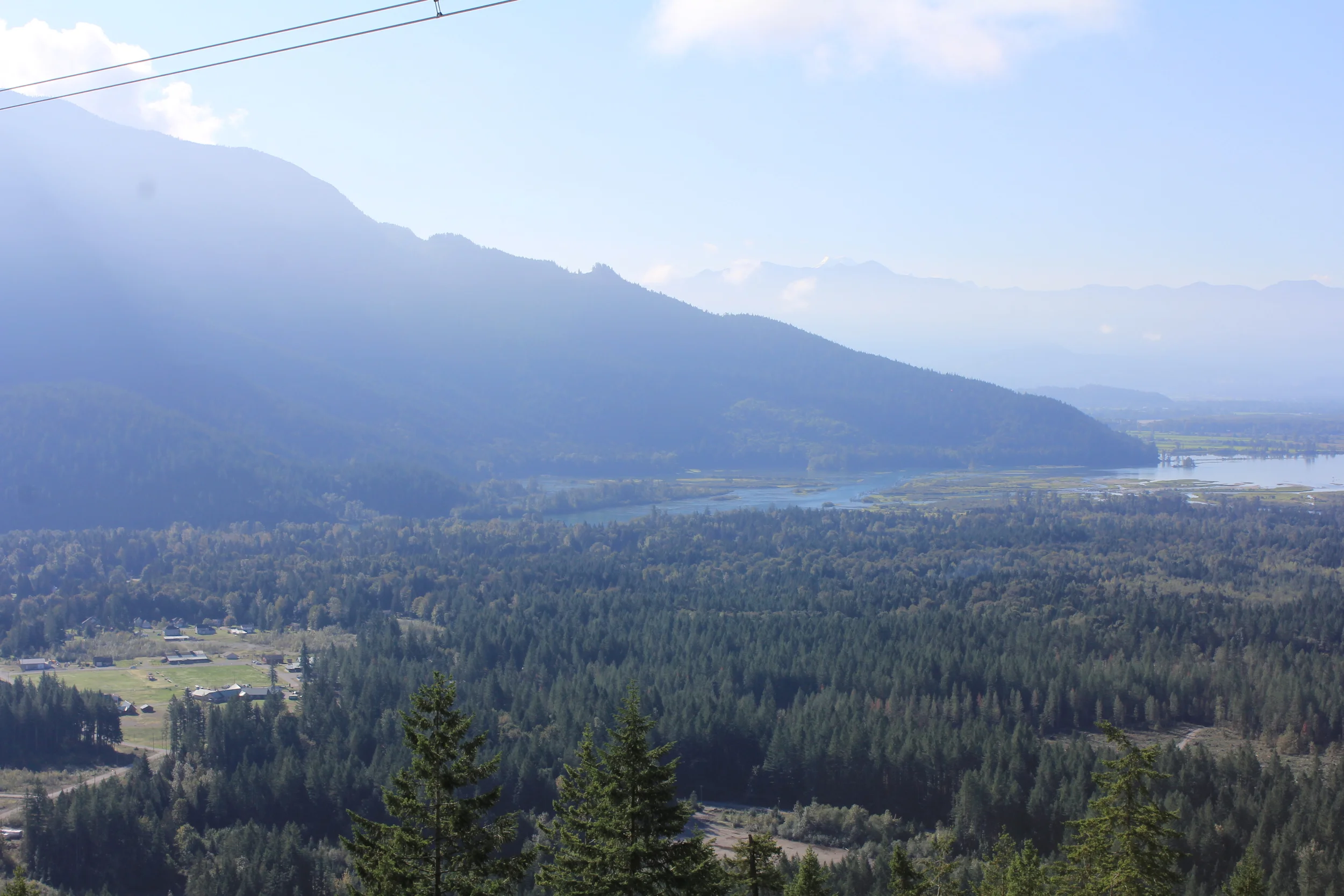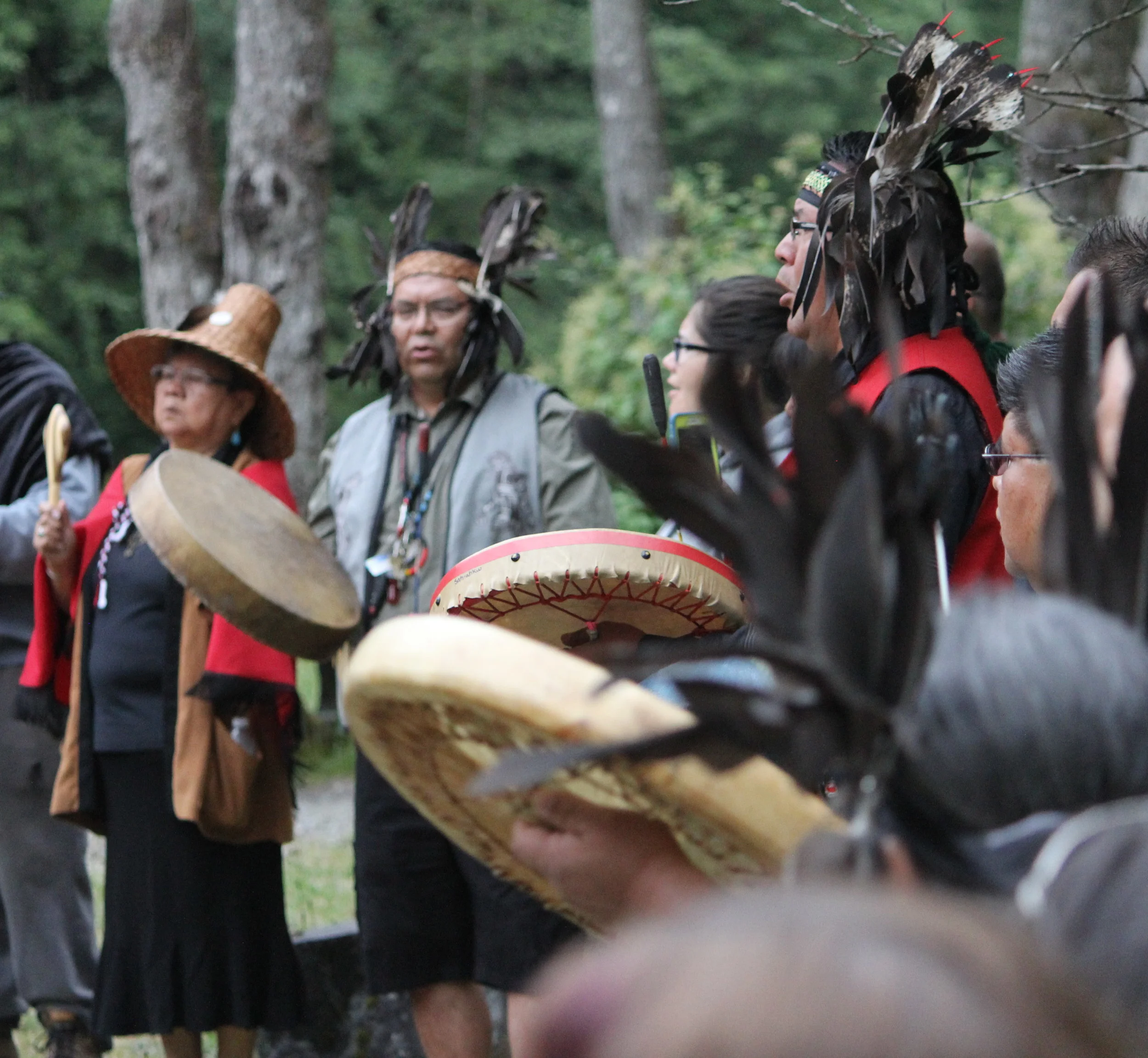We, the Sts’ailes, are a sovereign Coast Salish First Nation. Our ancestors have lived in our traditional lands since time immemorial and taught us how to respect it.
The name ‘Sts’ailes’ is derived from the Halq’eméylem word ‘Sts’a’íles’, which means “the beating heart”. There are other interpretations, such as “heart on the chest” or “laying on the chest” (c.f. Galloway 1079), “running aground on a sand-bar with the chest of a canoe” (Duff, 1952:27). The Sts’a’íles name is also derived from a most important transformer legend about an Indian Doctor, Shay (aka: Cäi, Skoyá:m, etc.), who lived on the west side of Harrison Lake at Doctor’s Point, and did battle with Xá:ls (the great Transformer who walked this earth in the distant past to put things right). According to our legends, upon defeating Shay, the Doctor, Xá:ls ripped his heart from his chest and threw it downriver, where it landed at Sts’ailes near the confluence of the Chehalis and Harrison Rivers.
According to Elders, there used to be a gravel-bar in the Harrison River fronting Sts’ailes IR 5 that used to pulsate like a beating heart during freshet. It disappeared in historic times. The Doctor himself was transformed into a rock at Doctor’s Point along the Harrison Lake.
Today, as in the past, our culture and economy is centered on the land and its resources. Just as our ancestors knew the significance, use, and value of all resources and lands, we must also. This is essential not only to fully participate in the broader economy, but also to protect those resources and lands that are integral to Sts’ailes identity, success, and permanence.
“Xa’xa Temexw”, literally translates to “sacred earth” and expresses the Sts’ailes’ spiritual, physical, and cultural connection to the land, its water, and its resources. Human beings (Xwelmexw) are only one small part of Xa’xa Temexw and have the responsibility to take care of it because all living things are interrelated and when one is affected, it affects the health and well-being of all.
Sts’ailes Xa’xa Temexw includes the entirety of Harrison Lake, Harrison River, Chehalis Lake, Chehalis River, the lower Lillooet River, the northeastern portion of Stave Lake, and the Fraser River between Hooknose and Queens Island. These major waterways are surrounded by ecologically diverse wetlands, estuaries, and floodplains, a multitude of valleys with small rivers and streams, mountain lakes, and glacial peaks. Situated throughout Sts’ailes Xa’xa Temexw were ancestral settlements, which were the nucleus of everyday commercial and domestic activities, and also semi permanent bases, which were used for hunting, fishing, plant gathering, and ceremonial trips.



